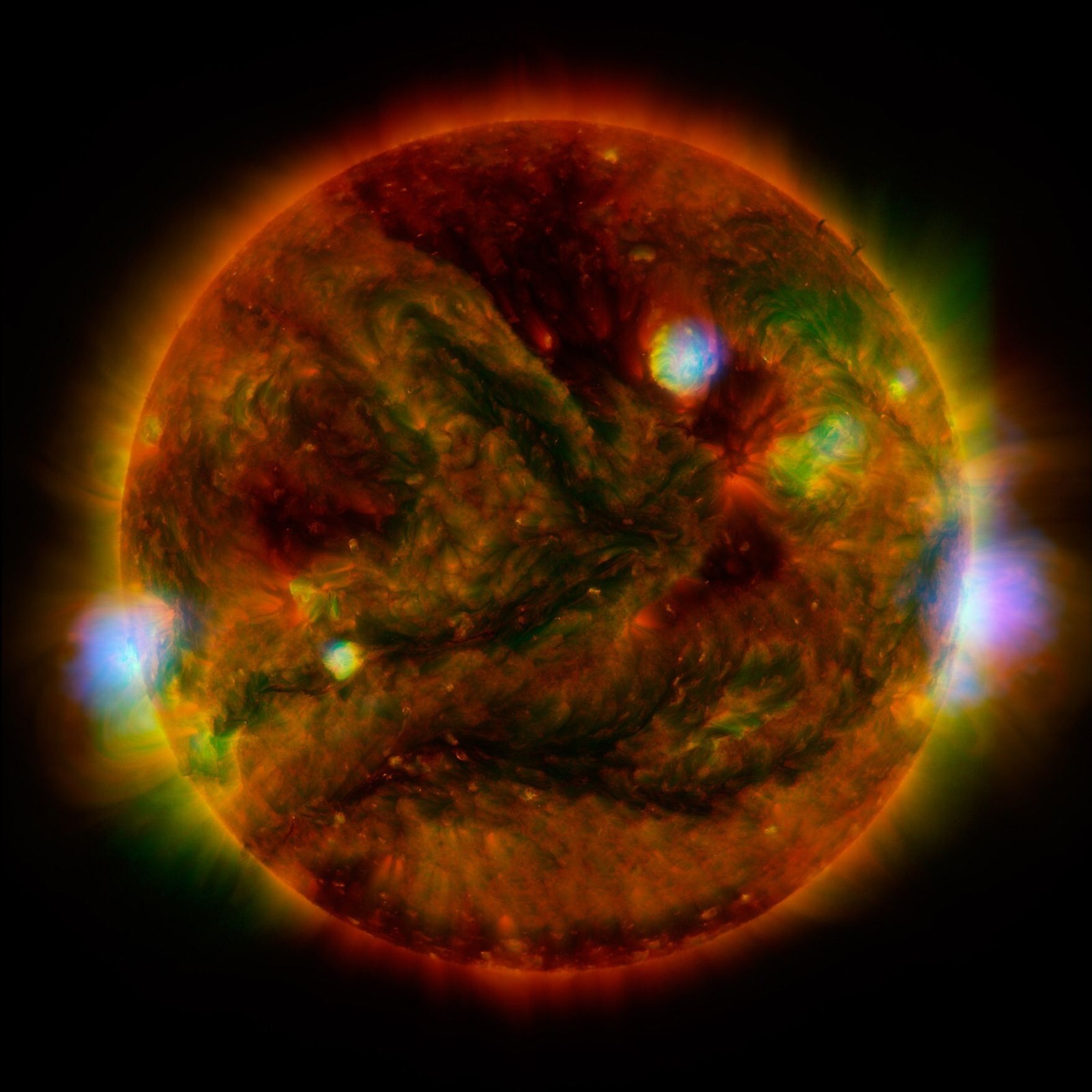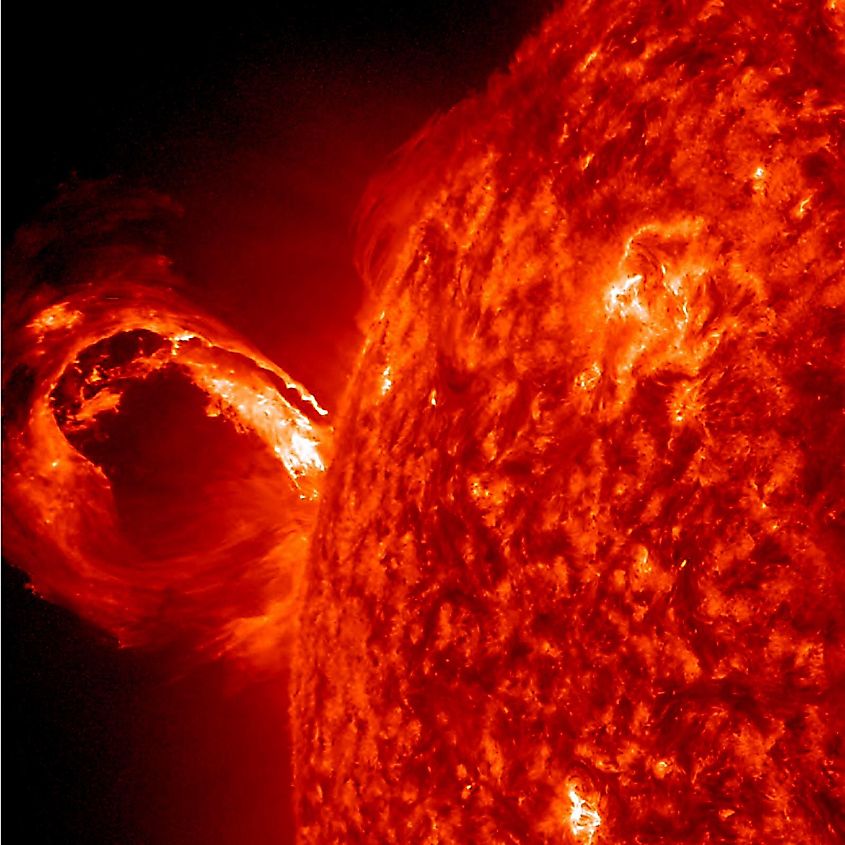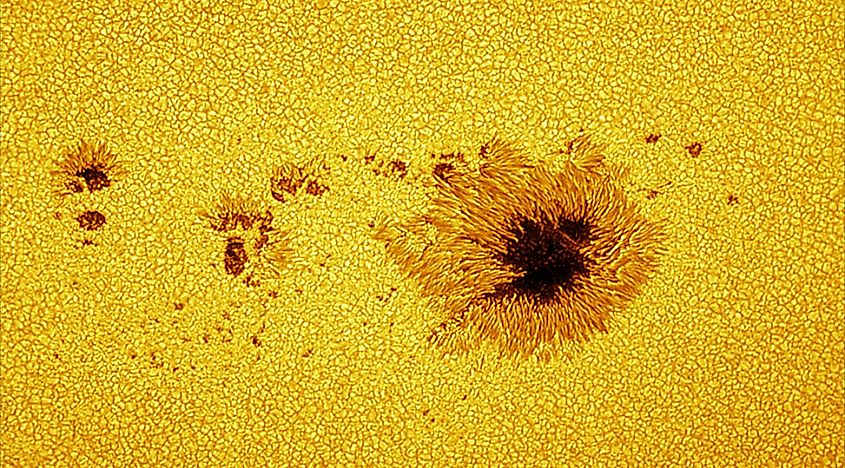
How Solar Flares Are Produced
- Solar flares are large bands of energy that eject plasma into space
- Solar flares form as magnetic field lines reconnect
- Coronal Mass Ejections are some of the largest solar flares
- If a solar flare impacts the Earth, it can damage energy grids
The sun is by no means a quiet star. Rather, the sun is fairly active, occasionally emitting vast bands of solar material called solar flares. A solar flare is a massive burst of energy equivalent to millions of hydrogen bombs going off in a second. Solar flares are one of the most intensely studied characteristics of the sun, especially since they can pose a potential threat to life on Earth. How are solar flares produced and how much of a threat are they?
How The Sun Makes Solar Flares

Solar flares are produced by the interaction of multiple factors, the most notable of which are the rotation of the sun and its magnetic field. The sun rotates once every month or so. However, the entire sun doesn't actually rotate at the same rate. Rather, the equator of the sun rotates much faster than the poles of the sun. The equator rotates once every 25 days, while the poles rotate once every 38 days. The difference in rotational speed between different regions of the sun has a profound impact on the magnetic field. The faster rotation at the equator causes magnetic field lines to become stretched and warped. However, most of this isn't visible from the surface. If the magnetic field lines are energetic enough, they can pierce through the sun's surface in the form of sunspots. Furthermore, the sunspots will be connected by a magnetic rope. The sunspots appear in pairs and are similar to a magnet. The sunspots are polar opposites: one negative and one positive. Both are connected by a long magnetic rope. The magnetic field lines connecting the sunspots can become tangled and reconnect with one another. This reconnection releases a tremendous amount of magnetic energy that bursts out from the sun in the form of a solar flare.
Coronal Mass Ejections
A process similar to the one described above gives rise to Coronal Mass Ejections (CME). Sometimes, the magnetic field lines become so tangled up that they actually snap. You can think of this like a rubber band being stretched to the point that it breaks, releasing its potential energy. The field lines will reconnect but at different points. Gaps are now created where plasma on the surface is no longer held to the Sun. Now free, the plasma explodes off of the surface as a CME.
How Much Of A Threat Are Solar Flares?

Solar flares can potentially be dangerous for life on Earth. If the Earth happens to be in the path of a solar flare, the solar flare can impact our world, potentially damaging the atmosphere in the process. Thankfully, solar flares this dangerous are exceedingly rare. However, even a small solar flare that happens to strike the Earth could potentially damage electrical grids on Earth, and satellites in orbit would probably cease operation. A solar flare strong enough could completely knock out electricity around the globe. Given how much humanity relies on electricity, this would cause unprecedented chaos. Thankfully, more advanced energy grids will likely be able to prevent energy surges from solar flares. Even if a solar flare were to hit the Earth sometime soon, humanity would likely be able to recover fairly quickly.











